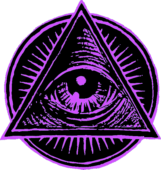Something about The Shining, directed by Stanley Kubrick and based on the novel
of the same name by Stephen King, inspires people to imagine this film in different ways. For example, is it possible to create a trailer for a “happy version” of this story? Given that the movie is about a man who goes into a homicidal rage and tries to kill his family with an axe, this might seem like an impossible task. Well, apparently that’s not the case, as someone has done it:
And is it possible to make scenes about a man in an axe-wielding homicidal rage funny? Well, yes–with the aid of a laugh track, that is. This clip gives cringe comedy a whole new meaning:
The following clip takes the same approach and goes it one better. Here The Shining is recast as an episode of Seinfeld with a little Benny Hill thrown in for good measure:
Now to take things in a different direction. Kubrick offered his audiences little explanation of his films beyond general remarks. Audiences were left on their own to wonder what his films were really about. Recently I read The Shining Revealed by Paul Whittington. Whittington argues that The Shining can be understood in Freudian terms as the story of Jack’s internal struggle pitting his id against his ego and superego, and through the Freudian concept of “the Uncanny“. Kubrick uses a number of devices toward this end. For example, Kubrick makes use of mirror images throughout The Shining, and in Jack’s case mirrors reflect his id. Whittington downplays any paranormal explanation of the story, arguing that the Overlook Hotel is not haunted. All can be explained through Freudian analysis. Well, except that The Shining also has a number of references to the genocide of American Indians. He makes a number of interesting observations but these two interpretations (a Freudian analysis of Jack’s twisted psyche and an allegory of the genocide of American Indians) do not sit easily beside one another. As an aside, The Shining inspired Paul Whittington to create Android 207, an interesting stop motion black-and-white short film about an android in a maze.
Another book also argues that The Shining is about genocide, but not that genocide. In his book Wolf at the Door: Stanley Kubrick, History and the Holocaust, author Geoffrey Cocks suggests that Kubrick was preoccupied with the Holocaust and that this is the subtext in The Shining. I haven’t read this one, so I can’t evaluate the argument.
And then perhaps the strangest interpretation of all, one that has inspired not one but two documentary films on the subject, is the notion that The Shining presents a confession of sorts by Stanley Kubrick for his role in faking the Apollo 11 moon landing. This is a multi-level conspiracy theory. First, that the moon landings were faked, and that NASA enlisted the services of Stanley Kubrick to pull this off after seeing how convincingly he was able to portray space travel in his 1968 film 2001: A Space Odyssey. Second, that Kubrick then embedded clues confessing his role in this deception in The Shining. I’m not going to even try to explain how these guys came up with this theory. You’ll just have to see for yourself. Here is The Shining Code.
The more celebrated film that relates this conspiracy theory is the documentary Room 237, which is currently in limited release around the country. After a recent showing in New York, Leon Vitali, who served as Kubrick’s personal assistant, called Room 237 “pure gibberish.” But I love a good conspiracy theory–the crazier the better–and that makes me want to see this movie even more. I hope to catch it in a couple of weeks when it comes to DC.


